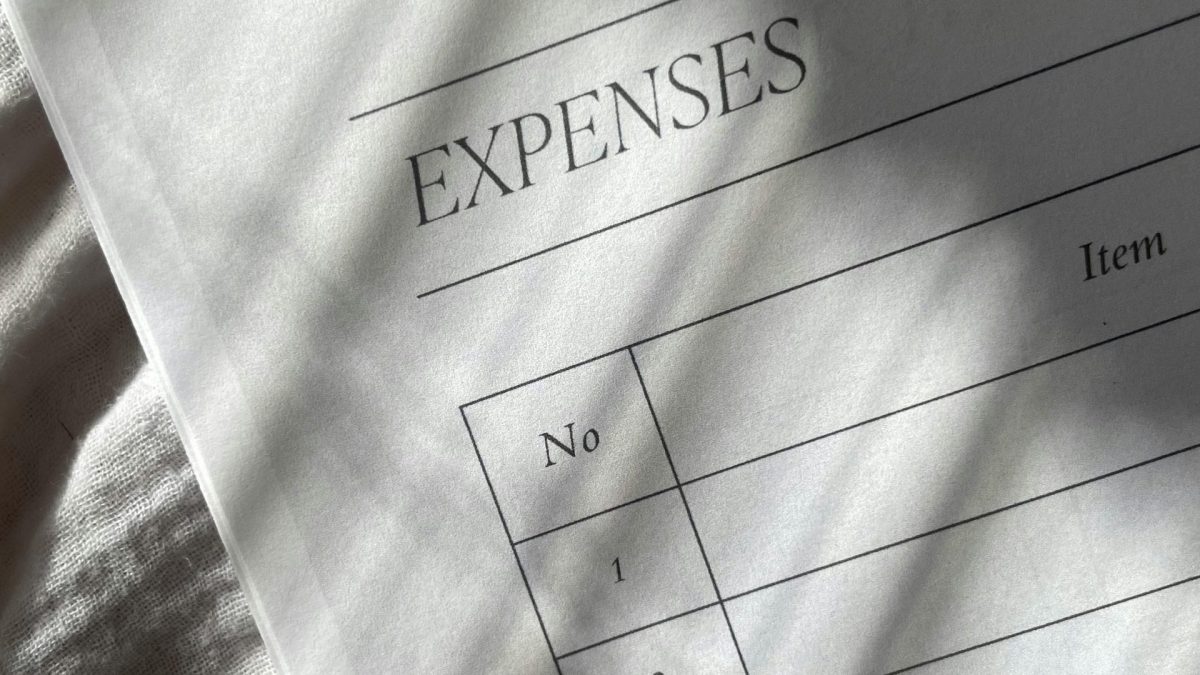An Overview of Parenthood’s Financial Journey

Although it is a happy occasion, having a new baby has important financial consequences that should not be disregarded. It’s essential to comprehend these financial factors for a seamless transition into parenthood. Early financial preparation becomes essential for establishing a strong future for your family. This post seeks to help you navigate the financial aspects of being a parent, from understanding the out-of-pocket expenses to putting long-term financial security plans into action. We explore the fundamentals of getting ready for the financial effect of a new baby with a well-organized overview and specific goals in mind, so you’re ready to make wise decisions. Accept this path with assurance, knowing that you are equipped to handle the financial facets of parenthood.
Budgeting for Necessities for a Baby

A new baby brings happiness and excitement, but it also signals a moment when budgeting becomes crucial. The first expenses might be high because basic necessities like a stroller, crib, car seat, and baby clothes quickly add up. These are the main pillars supporting your baby’s early development, providing comfort, movement, and safety. Investing in your child’s beginning journey is more important than just making a one-time purchase.
- First Setup: stroller, car seat, crib, and baby clothes.
- Perpetual Costs: Nursing care, formula, and diapers.
- Unexpected medical expenses, childcare, and higher electricity bills are examples of hidden costs.
Knowing these financial factors can help you ensure a stable and safe environment for your new addition, not merely budget for the expenses. The financial burden of a new baby may be controlled with proper preparation and budgeting, freeing you up to concentrate on what really counts: the happiness and health of your family.
Healthcare Expense Planning

It becomes critical to comprehend the nuances of health insurance coverage when a new life is imminent. It’s critical to examine the finer points of your pregnancy and infant care policy. Prenatal appointments, birth alternatives, and postnatal care are all included in this, so you know exactly what is and isn’t covered. Knowing these facts will help you focus on the joys of your expanding family by lowering your stress levels.
- Insurance Protection: Recognize the details of your policy on prenatal and postpartum care.
- Costs Not Covered by Insurance: Set aside money for delivery, postpartum care, and prenatal appointments.
- Fund for Emergencies: a reserve of money for unanticipated events.
For additional comprehensive data regarding healthcare expenses and financial planning, visit the The website of Services Australia is a useful source. It provides information on healthcare rights and government aid, enabling you to confidently handle the financial aspects of healthcare planning.
Having a well-thought-out plan for healthcare costs when embracing the financial path of motherhood guarantees a more seamless transition into this new stage of life. You’re protecting your family’s future well-being by knowing your insurance coverage, setting up an emergency fund, and budgeting for both known and unforeseen expenses. These actions go beyond simply preparing for the financial effects of a new baby.
Preserving for the Future of Your Offspring

Taking on parenting brings with it a plethora of new financial issues, the most important of which being investing for your child’s future. One cannot emphasize how important it is to get started early. Compound interest allows even little, regular contributions to a savings plan to increase significantly over time, giving your child’s schooling and beyond a strong financial foundation.
Parents have an abundance of alternatives when it comes to saving. With favorable tax treatment, education funds, like the Education Savings Plan, provide a focused way to save for educational expenses. Even though they are easier to access, traditional savings accounts could yield lesser returns. On the other side, investment programs offer a chance for more development, but at a larger risk. Every option offers advantages, and the best decision for you will rely on your risk tolerance and financial circumstances.
It takes finesse to strike a balance between other financial objectives and your child’s future savings. Keeping an overall perspective on your money is crucial, making sure that debt management, emergency fund building, and retirement savings are not neglected. Finding a balance between saving and investing for your child’s future and safeguarding your own can be accomplished with the aid of a diverse approach.
Knowing these tactics and choices is just the first step. It takes discipline and careful preparation to put them into practice. But the work pays off handsomely because it puts your kid on the path to achievement and financial freedom. If you take the proper attitude, you can enjoy being a parent while feeling secure in the knowledge that you’re giving your family a bright future.
Making Informed Decisions and Reducing Expenses

Buying Advice for Baby Essentials: Which Items Should Be Purchased New or Used
Making the right decisions about what to buy new and what may be safely acquired used is essential when furnishing your nursery:
- Fresh: It is advisable to purchase new products to ensure that they fulfill the most recent safety requirements, including as car seats and cribs.
- Used: Babies outgrow toys and clothing quickly, so buying used items can save a lot of money without sacrificing quality.
Using Community Resources: Taking Advantage of Loans, Trades, and Freebies
Communities frequently come together to support newlyweds, offering a network for baby item exchange or borrowing. By using websites like parenting forums or local Facebook groups, you might find free or gently used products to extend your budget. This promotes a sense of community support in addition to cost savings.
Cutting Occasional Costs: Making Baby Food at Home, Using Cloth Diapers, and Conserving Energy
Recurring costs accumulate rapidly. Take into account these cost-cutting measures:
- Compared to store-bought baby food, homemade baby food is more affordable and nutritious.
- When compared to disposable diapers, cloth diapers can result in significant cost savings over time, despite the upfront outlay.
- Energy-saving techniques, such effective heating and cooling methods, can lessen the financial strain by reducing the increase in utility costs.
Adopting these tactics helps maintain a sustainable lifestyle while also lessening the financial burden of a new baby. Financial sustainability and satisfaction can be achieved by skillfully managing the expenses linked to a new family member through careful planning and a little ingenuity. Through prioritizing safety, utilizing available community services, and implementing economical strategies, you may provide your child with a safe and nurturing environment without breaking the bank.
To sum up
Having children turns managing money into a path filled with love and wisdom. It strikes a balance between happiness and frugal spending to secure a secure future for the newest member of the family. Parents may manage the financial consequences of a new baby by carefully planning, creating a budget, and conserving money. This allows them to turn obstacles into chances for personal development. For a fulfilling future, embrace the community, put safety first, and implement sustainable practices. With confidence, let’s embark on this road and make the most of every minute of motherhood while securing our children’s future.
Preparing for the Financial Impact of a New Baby FAQs
Assessing your current financial situation, potential budget adjustments, and the impact on your career are critical steps in deciding whether you can afford to stay home with your baby. This decision involves comparing your income with the cost of childcare, considering any potential career growth sacrifices, and evaluating how it aligns with your family’s long-term financial goals. Open and honest discussions about finances and priorities with your partner are also essential in making this decision.
Creating an emergency fund specifically for unexpected baby expenses, such as medical bills or sudden loss of income, is essential. Aim to save at least three to six months’ worth of living expenses, as this can provide a financial cushion and reduce stress during emergencies. Regularly contributing to this fund, even in small amounts, can make a big difference in your preparedness.
Buying baby essentials in bulk, considering second-hand items, and accepting hand-me-downs are effective ways to save money. Many baby items such as clothes and toys are used gently and can be found in excellent condition for a fraction of the cost. Additionally, look for sales and use coupons when purchasing items new.
Researching childcare options early and budgeting for the associated costs is key to financially planning for childcare. Costs can vary widely depending on the type of care (e.g., daycare, nanny, family care) and location, so it’s important to factor this into your budget and possibly adjust your work schedules or consider remote work options if available. Additionally, exploring childcare subsidies or tax credits can help offset some of these expenses.
Having a baby can positively affect your taxes, as you may be eligible for child-related tax credits and deductions, such as the Child Tax Credit and Child and Dependent Care Credit. These can significantly lower your tax bill by providing additional refunds or reducing the amount of tax you owe. It’s important to update your tax information and consult with a tax professional to maximize these benefits.
Yes, starting a college fund for your baby as soon as possible is advisable, taking advantage of compound interest over time. Even small contributions can grow significantly, and many plans offer tax advantages. Starting early also spreads the cost over a longer period, making it less burdensome.
Setting up a savings account specifically for baby-related expenses, adjusting your health insurance, and creating a new budget are crucial steps. This preparation helps manage the financial impact more smoothly, ensuring that you are covered for both expected and unexpected expenses. It’s also wise to start an education fund for your child as early as possible.
Expect your budget to increase significantly with the addition of a new baby, primarily due to costs such as diapers, formula (if not breastfeeding), and childcare. These expenses can add up quickly, so it’s important to adjust your budget accordingly and plan for increased monthly spending. Additionally, you may need to consider one-time costs such as nursery furniture and a stroller.
You should consider updating your health insurance to include your baby and look into life and disability insurance to protect your family’s financial future. Adding your baby to your health insurance plan is crucial and typically needs to be done within 30 days of birth. Life and disability insurance provide financial security in case of an unforeseen event affecting your ability to earn income.
Understanding your employer’s maternity or paternity leave policy and how it will impact your income is crucial. Some employers offer paid leave, while others may provide unpaid leave, affecting your financial situation. Planning and saving for the potential reduction in income during this time can help maintain financial stability.

